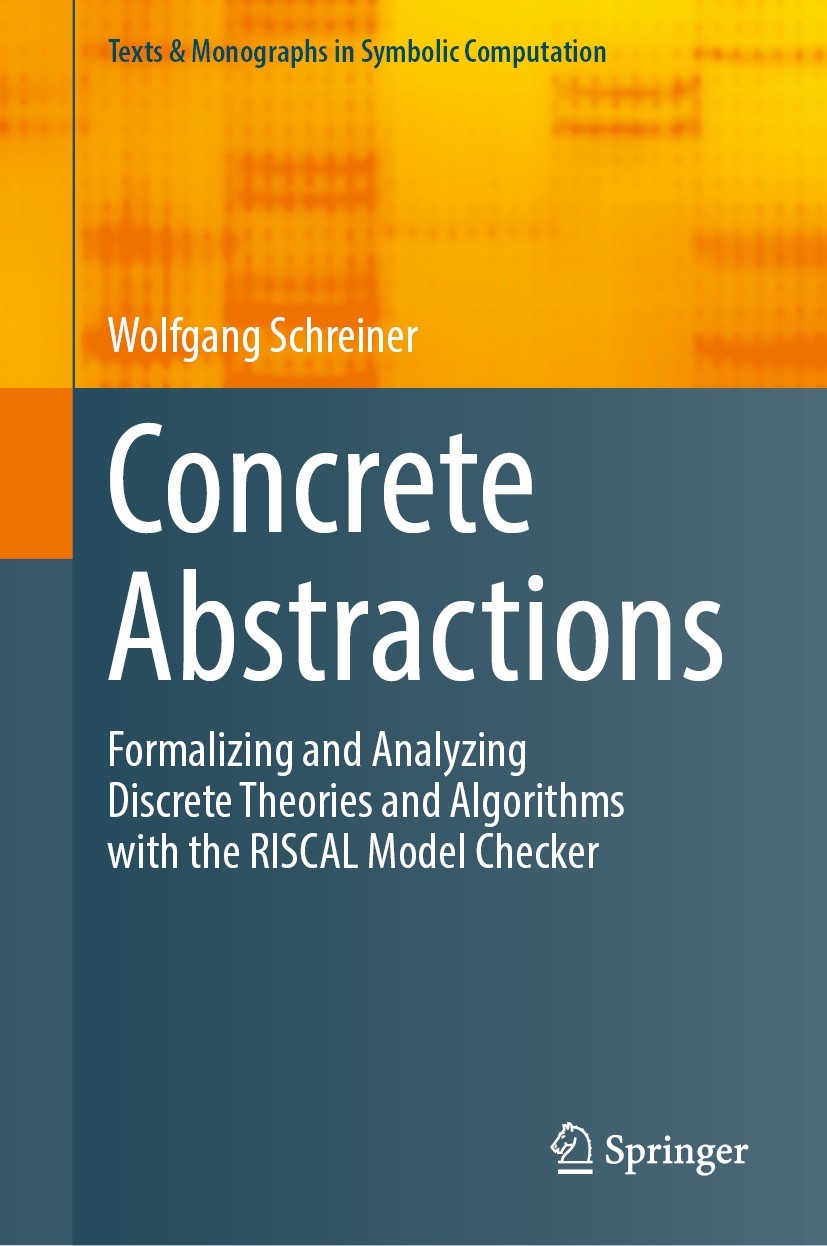326.006, VL Formales Modellieren, Wolfgang Schreiner / Carsten Schneider / Wolfgang Windsteiger, 2024S
Abschnittsübersicht
-
326.006, Wednesday, 15:30-17:00, Room: S2 044, Start: March 6, 2024 (15:45)
We discuss the formal modeling of mathematical problems that are amenable to algorithms and software from symbolic computation; the models are based on the language of algebra and logic. In this lecture we present particular examples from various application domains. In the accompanying proseminar students are expected to model selected problems and demonstrate their results in the form of small papers and presentations.
-
Preliminary Schedule
- March 6 (15:45):
- Introduction to course topics.
- March 13, March 20, May 29 (S3 048), June 5:
- Wolfgang Schreiner: Logical Models of Problems and Computations
- April 10, April 17, May 15, May 22:
- Wolfgang Windsteiger: Modeling Problems in Geometry and Discrete Mathematics
- April 24 (17:15-18:45), May 8 (17:15-18:45), June 12 (17:15-18:45), June 19 (17:15-18:45):
- Carsten Schneider: Symbolic Summation and the Modeling of Sequences
GradingStudents have to submit 3 positive home assignments to pass the course (if an assignment fails, after the course a substitute is handed out)
-
We discuss geometric problems and problems that can be modelled in the language of graph theory and in the language of combinatorial optimization. After modelling the problems appropriately we discuss general and special solution techniques and algorithms that can be applied to these problems. Problems discussed will cover
- proving geometrical statements using algebraic techniques,
- the Shortest Path Problem, and
- the Bin Packing Problem.
- proving geometrical statements using algebraic techniques,
-
In this part of the lecture we will deal with the challenge to model sequences (infinite objects) by using computer algebra technologies.
Special focus will be put on
- modeling sequences tailored for the user in the setting of term algebras;
- modeling sequences in formal difference rings tailored for the computer ;
- connecting the two worlds to extract interesting properties for the user.
The lecture will be enhanced stepwise and the topics will be summarized within the lecture notes that can be found here. In addition, there are slides and a Mathematica Notebook given here that supplements the lecture.The corresponding homeworks will be explained in the lecture. The precise specification can be found here.- Lecture 1: April 24, 2024
Symbolic summation (a short introduction) - Lecture 2: May 8, 2024
Modeling of sequences with a term algebra (the user interface) - Lecture 3: June 12, 2024
Modeling of sequences in difference rings (computer algebra) - Lecture 4: June 19, 2024
Algorithmic construction of difference rings and applications
